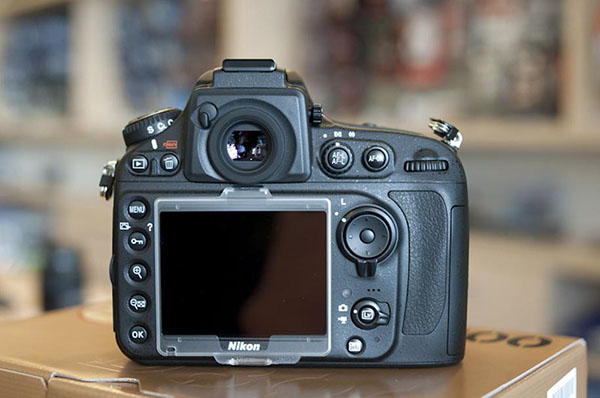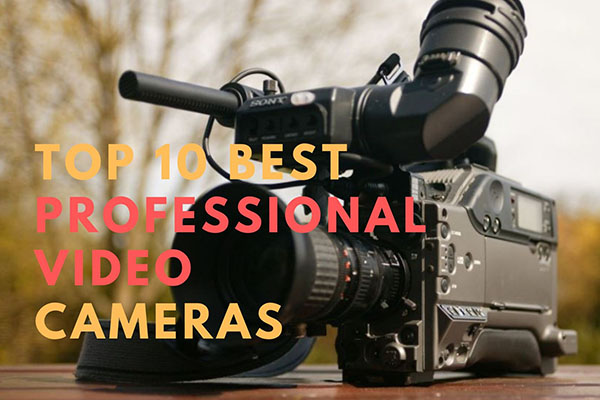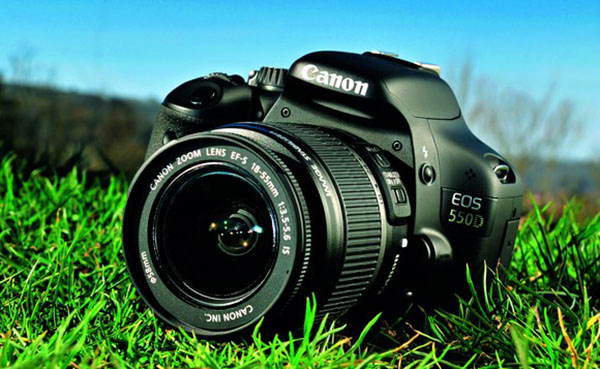Nikon is the most sought after camera series of professionals throughout the world. They are designed in such a way to fulfill the expectations of the days in future photography and video. The powerful Nikon D800 beats the market with exceptionally new technology that brings out unmatched quality in every single detail in perfect depth.
A noteworthy function is that shooting of a broadcast quality video has all necessary flexibilities to have a smooth video capturing experience. Nikon D800 is a challenging one to other digital-SLR cameras in the market. Monumental photography is always remembered along with the great professionals behind the creation and of course the instrument reasons a lot for the professionals’ every milestone.
Overview:
Nikon D800, the innovative FX-Format model brings out the world’s utmost effective pixels of 36.3 million pixels and which is equally matched with the all new EXPEED 3 image processing engine especially designed for Nikon digital SLR cameras and upgraded a 91k pixel RGB sensor which reasons for the highly advanced scene recognition system and that produces outstanding definition and quality images.
The higher image quality not almost but absolutely equals the result achieved by medium format digital cameras which is a unique quality of this model. This model is prepared with multiple new features such as multi area mode full HD D-movie and this makes movie recording possible either the FX or DX-oriented movie format. The review will discuss everything in detail.
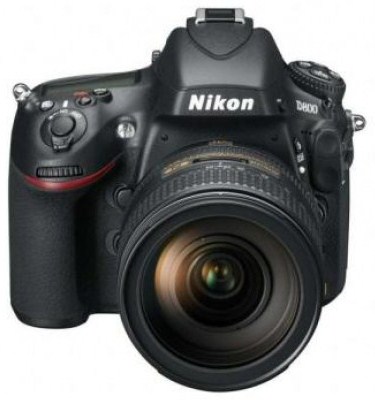
Pros:
- Stunning build quality offers friendly handling
- Superior image quality with pin sharp details
- Large number of pixels equipped with high ISO performance
- Excellent accuracy and fast AF
- Large size images
- Setting adjustments are fast
- Live view is greatly improved
- Dual expandable card slots – SD or CF
- 100 percent viewfinder coverage
- Built-in flash
- Excellent to shoot uncompressed footage
Cons:
- No built-in Wi-Fi or GPS
- Not sufficient battery durability
- No mode dial that can be locked
- Large file size requires much storage space
- AF is little bit slow in live view and video
Body and Design:
Although D800 resembles much like the previous edition D700, a lot of styling changes have been added to the new version. This new edition is approximately ten percent lighter than the D700. D800 adopts a little amount of curved rationalized body shape. The basic ideology for the function keys of Nikon have been changed in order to bring out very smooth access to the functional keys which is mainly focused to ease the use of video related functions.
The shutter release has been modified to a better position for getting better ergonomic. The predecessors D3S and D4 of Nikon have been strongly weather-sealed, so that we can just move around anywhere which is presented without fail in this edition as well. The magnesium alloy body construction makes the high-end class feel and it is weather-sealed for protecting from external elements. The handgrip is made up of solid rubber provides the expected grip even to the amateurs.
Controls:
On the right side of the rear screen one more new push button is fixed for switching between still images and live video view. This particular option is already exposed in the previous model D4. Focus mode control button is placed on the left of the lens mount which is usual pattern that follows Nikon’s DSLR series. This is a combination of two different control dials in the camera.
The control button is like a rotating dial in the rear potion and a switch like dial in the middle, so that we could rotate the rear dial to move between Single and continuous AF briefly known as AF-S and AF-C and the AF area selection mode can be chosen in the given mode by using the front dial.
This option is connected to the hybrid multi viewfinder that means there is no need to lower our camera from our eye in case of a need arises. On the top of the camera we see the refined release mode dial and it is distinctively well placed. This is presented with single and continuous self-timer along with the mirror lock drive modes. Supposing that we are in sensitive surroundings; then, a separate ‘quiet mode’ is attached to reduce the noise that happens during shutter release. The control buttons designed in the middle of the shutter release are now holding four controls such as white balance, quality, ISO and fourth one bracketing button is newly added in this edition which is not seen in the D700.
A dedicated video recording button is placed just near the shutter release and there is a chance to accidentally press the wrong one at times, if we are used to toggle between modes. Still, it is not a big issue to be considered. While looking at the rear potion of the camera, we notice that the screen is slightly larger. But our attention is getting closer to the place where usually AF area mode switch is placed. That one is replaced with a new still and live footage switch. On the left of the screen, we find menu button on the top and usual controls like zoom in and out.
LCD Screen:
Nikon D800 cannot be considered completely a camera much focused on video, the reason behind this is the rear LCD is not an articulating screen, yes, it is a fixed screen. It is a 3.2 inches TFT LCD screen with 170 degrees wide viewing angle. The panel of the screen is too good and the automatic monitor brightness control is a noteworthy feature and delivers quality images. Flat screen has some amount of reflection, it is absolutely negligible.
Viewfinder:
Nikon D800’s Viewfinder has 0.7x magnification the same found on the Canon Eos 5D mark III model and that here promises and produces 100 percent frame coverage where this is very much helpful when we have zero time left out to crop our images for posting or publishing since we are very much connected to the social media. Plenty of AF selection modes are shown visibly clear on the LCD monitor since the AF is improvised and that helps us choose the one we want easily and immediately.
Still, there is a setback that the selection modes are not in the DX crop area. It is just overlaid on the corners of the frame. Targeting outdoor photographers, an option of dual-axis electronic virtual horizon is added. This is also viewed on the LCD screen and left displayed as it is even the shutter is almost half closed. We are given the choice of confirming both the vertical and horizontal axes in D800’s viewfinder, whereas D700 has a single axis tilting indicator.
Live View (Manual and Autofocus):
Live View has been given its own personal space on the controls part, a full-bodied button on the right adjacent to the LCD screen. The Live View briefly ‘Lv’ button is surrounded by a handy liver which allows toggling between still images and footage mode. We have an indication on the LCD screen once we turn on the live view and it is left displayed. The aperture of the lens is automatically tuned, so that we would have a clear preview of the depth of the field to be shot. Moreover, adjustments of exposure can be changed at the time of preview. Exposure adjustments and to bring out onscreen exposure indicator can be made just by clicking the OK button on the left of the screen.
Contrast detecting autofocus application is limited after the activation of the live view. One more option we have despite the contrast detecting autofocus is a hand-held live view mode where it requires only a slight press of the shutter and that stops live view. Continuing this, a phase detection autofocus gets on to obtain focus. Contrast detect autofocus performs really slower compared to the phase detection autofocus. Multi selector arrows are used physically for positioning the AF point just anywhere we decide inside the frame. The multi selector arrows allow the camera to continually switch over between the static and full time AF modes.
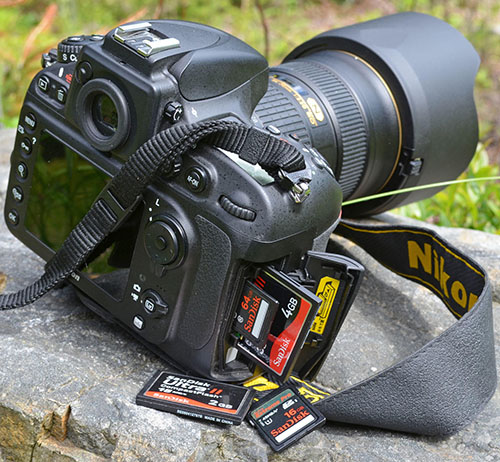
During the live view, applying the manual focus is just cool. Preview of the images can be adjusted via the zoom buttons presented on the camera’s rear potion. The multi selector arrows such as left, right and up, down are used to scroll from side to side of the enlarged areas of the still image. We are unable to use the highest magnification level; the reason behind this is the image is pixilated a lot. Yet, we can use until the penultimate level which is apt for vital focus. There are certain occasions where the camera cannot provide the exact preview of the final stage due to too much of darkness or brightness, in such cases we will be informed through a continuous blink of the exposure indicator.
Menu System:
People who are already exposed to the menu system and the operations of Nikon’s SLR series would feel at ease moving around which does not mean the one who is newly operating would find it difficult. Just a moment of observation is what needed. Comparing the previous series of SLRs like D700, D3S and D4, no major changes have been added to the menu system but one that is the dedicated footage option.
Information Display:
Information display located on the top of the camera is sensibly arranged with wide ranging shooting information needs a single press on the info button in shooting mode. The information screen can be manually fixed to the contrast modes which requires according to the light level of the immediately surrounding area. Information display functions like a monitor will get turned off automatically if it stays without activity after a period of time and the duration can be preplanned by the user.
Features:
Sensor:
The incomparable 36.3MP full frame CMOS sensor is most attracted feature in Nikon’s D800 model. D800 marks the DSLR series’ highest resolution sensor. Larger images can be easily produced with this sort of high resolution, yet there is so much flexibility to crop much closer to the images.
ISO Sensitivity:
Nikon D800 has got the increased level of pixel density but the ISO range has not been that much modified. The standard range begins normally from 100 to 6400 and an ISO equivalent extended range can be even up to 25,600. The sensitivity of the attached chip can be enriched in other direction also. So that shooting at the highest ISO equivalent of 50 is very much possible in D800.
High definition movie quality:
People who are interested in making short films, music albums and may be even movies can have a good experience with D800 since it is compact and lightweight DSLR. B frame data compression helps out the professionals to shoot 1080p full HD footages at 30p in matchless clarity either in mpeg-4 AVC format or in H.264 and it can be shot in a single length of approximately up to 30 minutes.
We have to really appreciate the immense power of image processing that is always unique for Nikon users, which helps producing images with less noise blocked but sharpness and clarity are not compromised when taking wide range of natural shots. As we discussed, the enhanced sensor and Expeed 3 processing engine of Nikon’s DSLRs have brought the videos look as we expect even they are shot in minimum lighting.
Scene recognition system:
Nikon’s innovative scene recognition system equipped with 91k pixel RGB sensor which was firstly introduced in D4 model is again included in D800. 91k pixel RGB sensor thoroughly analyses every scene that gets the final result with rich resolution. The RGB sensor plays the role of analyzing the colours and brightness in the surroundings and activates different automatic controls needed for producing more naturally touched pictures. And no wonder the sensor can identify human faces with amazing accuracy through optical viewfinder.
Besides face detection, thorough scene recognition is used to support perfect autofocus, auto exposure and additionally i – TTL exposure brings out different types of lightings in the occasions. Subject tracking is much improved and we would be surprised while using especially in 3D tracking and this can constantly maintain the shift of focus on moving subjects in case of shooting a running child, flying bird.
Battery:
Nikon D800 is equipped with rechargeable lithium-ion EN-EL15 battery. There is no sufficient battery durability for footage coverage. It is s minor setback for users those who are not a constant video oriented professional.
Verdict:
Nikon D800 is really impressive despite the cons listed above. The Nikon brand has again launched a pleasing and professionally well built camera. D800 promises and delivers clarity rich results even while shooting under various conditions and that too with a reduced noise. Perhaps, that’s the ultimate choice for a photographer to look for. Briefly, setbacks mentioned are negligible when performance is considered.
Specifications:
| Manufacturer | Nikon |
| Model Name | D 800 |
| Type | 36.3 MP CMOS FX Format Digital SLR Camera |
| Dimensions (H x W x D) | 123mm x 146mm x 82 mm |
| Weight | 900g (Including battery) |
| Display Screen | TFT Colour LCD with 170 degrees wide viewing angle |
| Screen Size | 3.2 Inches |
| Effective Pixel | 36.3 megapixels |
| Image Format | NEF(RAW) 12 or 14 bit, TIFF (RGB), JPEG |
| Exposure Compensation | ± 5 |
| Sensor Type | CMOS |
| Colour Filter Array | Primary colour filter |
| Video Format | MPEG-4, H.264 |
| Microphone | Mono type |
| Speaker | Mono type |
| Warranty | 1 year |
- Related post: Canon PowerShot S95 Digital Camera Review

